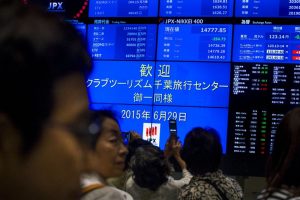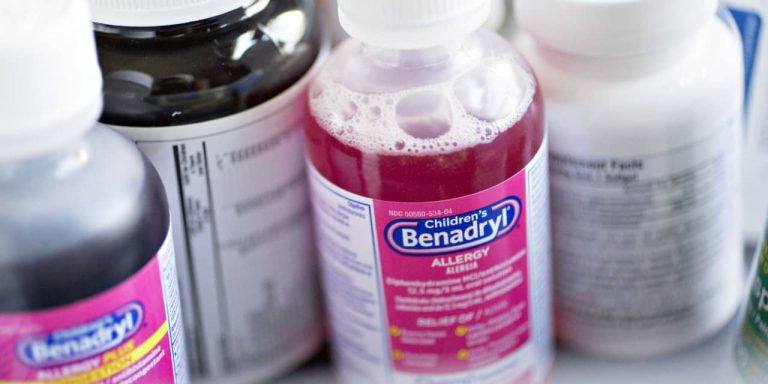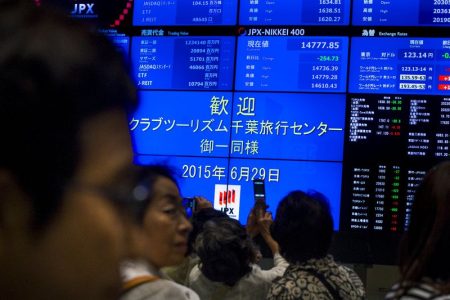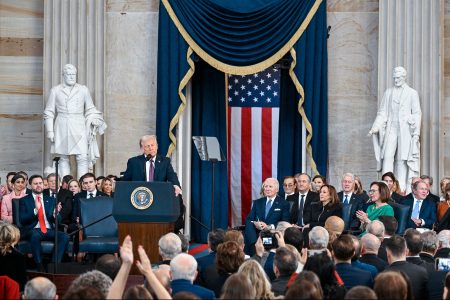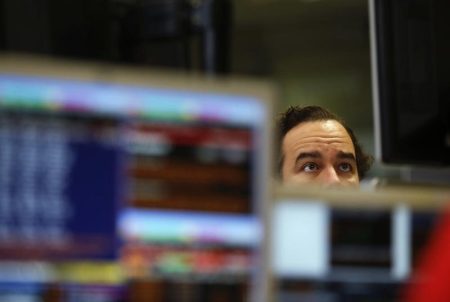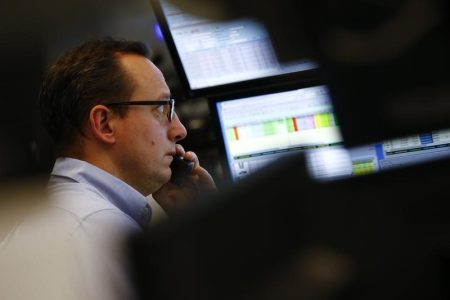Johnson & Johnson Benadryl brand allergy medication is now a part of Kenvue.
Daniel Acker/Bloomberg
Johnson & Johnson
plans to maintain its quarterly dividend at $1.19 a share even after separating its
Kenvue
over-the-counter drug and personal care business.
It didn’t have to do that to keep its status as a Dividend Aristocrat. It did it because it can and because shareholders will like it.
On Wednesday, J&J (ticker: JNJ) updated its financial guidance following the completion of the exchange offer for
Kenvue
(KVUE) stock. J&J took about 191 million of its own shares for 1.5 billion shares of Kenvue stock it held. Kenvue raised money in an initial public offering in early May.
J&J is a Dividend Aristocrat, in the S&P 500 Dividend Aristocrats Index, which includes companies that have raised their payouts for at least 25 consecutive years. When an aristocrat separates a business,
S&P Global
(SPGI) looks at the payouts from the combined entities for a period of two years to make sure payouts are still rising.
Kenvue has already declared its first dividend of 20 cents a share. That means, theoretically, JNJ could have reduced its quarterly payout a little bit and maintained its Dividend Aristocrat status.
Investors didn’t have to participate in the exchange offer. So it was possible a non-participator could have seen a reduced dividend payout on their J&J holdings. They might not care about Aristocrat status if payouts fell by a nickel or so per quarter.
But it wasn’t a mistake for an investor not participate in the exchange, even if J&J adjusted the dividend. Someone who didn’t participate in the exchange now owns a slightly larger percentage of J&J. The company reduced its share count, taking in J&J stock and passing out Kenvue stock held. What is more, J&J still holds some Kenvue stock because not everyone participated in the exchange offer.
J&J holders, however, don’t have to worry about any of that. J&J is simply going to keep paying $1.19 a quarter for now. That will cost the company between $11 billion and $12 billion annually. No sweat. Wall Street projects J&J will generate roughly $26 billion in free cash flow in 2024, according to FactSet.
The dividend will consume less than half of the free cash flow. That isn’t a heavy burden. The average payout ratio for all dividend payers in the S&P 500 is about 50%.
Kenvue stock is up about 4% since its IPO in early May. J&J shares are down about 2% over the same span. The
S&P 500
and
Dow Jones Industrial Average
are up about 10% and 4%.
Dividend payers have been out of favor lately. The
ProShares S&P 500 Dividend Aristocrats ETF
(NOBL) is up about 5% year to date, trailing the S&P 500 by about 12 percentage points.
Write to Al Root at [email protected]
Read the full article here


